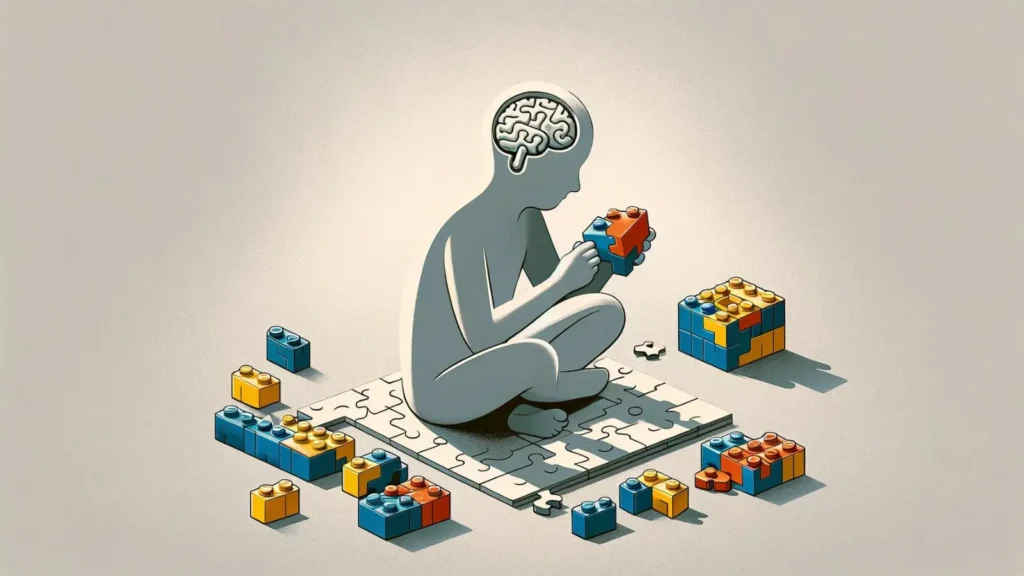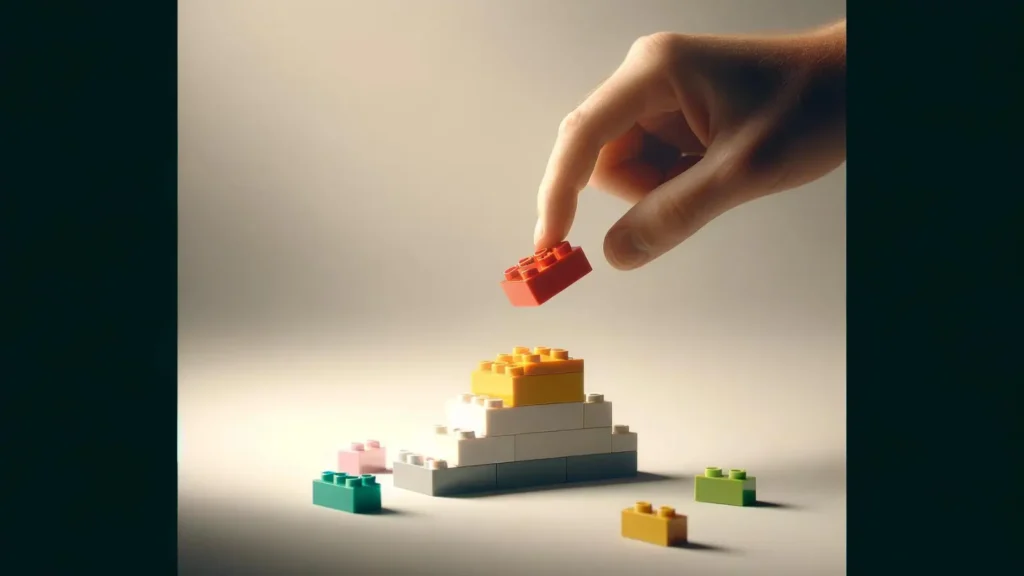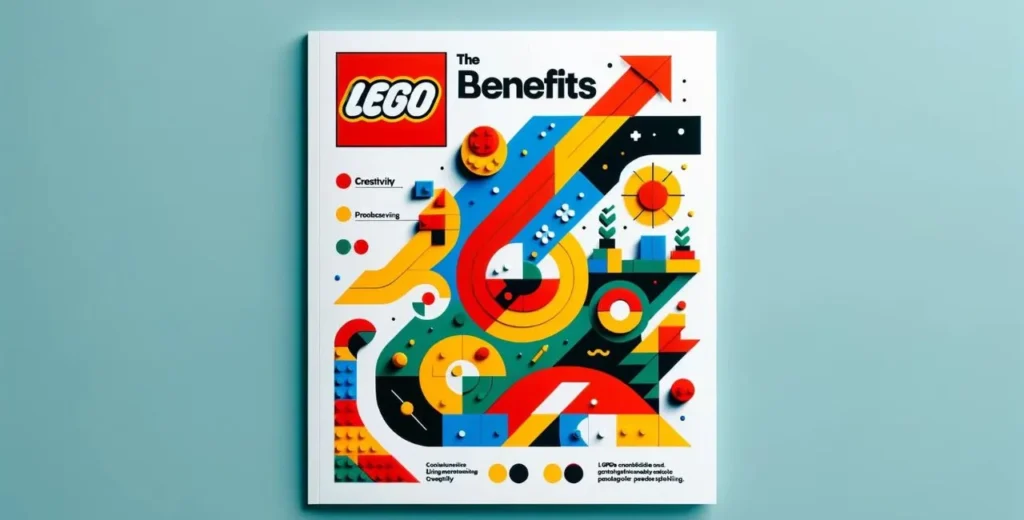In the vast expanse of the global toy market, Lego stands as a towering giant, leading the industry with a staggering sales revenue of more than $7.2 billion in 2020 alone. Amidst a worldwide toy market accumulating around $94.7 billion in the same period, it carved out a significant 7.6% market share for itself, solidifying its status as the largest toy company on the planet. This impressive feat not only underscores its widespread popularity but also its universal appeal across various demographics.
Beyond its popularity as a toy, LEGO holds a deeper significance—it offers a wide range of benefits for people of all ages. In this article, we emphasize real-life examples, including scientific research and personal experiences, to highlight how it enhances cognitive development, fosters creativity, teaches life skills, improves social interactions, and promotes mental well-being.
Why Legos benefit for both adults and kids
LEGOs aren’t just for kids anymore. In fact, they offer a myriad of benefits for both adults and children alike. From enhancing cognitive skills to promoting relaxation and stress relief, building bricks provide a versatile platform for creativity and learning at any age.

Connecting Across Generations
LEGOs bring people of all ages together, letting parents, grandparents, and children join forces in play and storytelling. This not only strengthens family ties but also builds respect and understanding between different age groups. Building and creating with it teaches both adults and kids to appreciate each other’s ideas, work together toward common goals, and celebrate their successes.
Improving Mental Well-being
Building with LEGO bricks is calming and soothing, offering stress relief for both adults and children. Adults find a break from work and daily life, enjoying mindful play that refreshes their mind. Children use it to express their feelings and cope with challenges, promoting emotional growth and resilience.
Encouraging Lifelong Learning
LEGOs inspire curiosity and learning at any age. They challenge users to think creatively, solve problems, and adapt to new situations—important skills for today’s world. Adults rediscover the joy of learning through play, exploring new concepts and designs, while children develop critical thinking and motor skills. This shared learning experience not only expands knowledge but also fosters a passion for discovery that lasts a lifetime.
Are Legos good for your brain?
This question sparks an interesting discussion about how playing with Legos can benefit our brains and emotions. Beyond their fun colors and the satisfying feeling of building, they actually help our brains grow and work better. They do this by improving how our brains can change and learn new things, and they also help people from different backgrounds connect with each other. Let’s explore how playing with Legos can make our brains and emotions healthier, showing why they’re great for both kids and adults.

- Promoter of Neuroplasticity – Playing with Legos challenges the brain, helping it grow stronger and more flexible, which is important for learning new things and staying sharp as we age.
- Meditation and Mindfulness Alternative – Building them can make us feel calm and focused like meditation does. It helps reduce stress and makes it easier for both kids and grown-ups to pay attention.
- Cross-Cultural Cognitive Bridge – They bring people together from different cultures by giving us a fun way to share our creativity. We can learn about each other’s stories and ideas, making our minds more open and understanding.
- Emotional Regulation Tool – Playing with them gives us a way to express our feelings in a positive way. It makes us feel good about what we create, which can help us feel happier and more in control of our emotions.
- Catalyst for Abstract Thinking – They help us think in new and creative ways by challenging us to build complex things with simple blocks. This helps us get better at solving problems and coming up with new ideas.
Cognitive Development
Spatial Intelligence involves visualizing and manipulating objects and spaces. It’s crucial for understanding how things relate to each other and solving problems involving physical spaces. Logical Thinking, on the other hand, is about reasoning systematically and finding logical solutions to problems by analyzing patterns and using deductive reasoning. These skills are essential in areas like math, science, and engineering and help us make decisions and understand complex ideas.
Both skills are super important for learning and success in school and careers. They help us solve problems, make decisions, and understand the world better. Starting to develop these skills early on can make us better at problem-solving, decision-making, and understanding how things work.

Scientific Study
A study from the UK looked at how playing with Legos relates to math skills in kids. They tested 7-year-olds and found that kids who were good at building with them also tended to be good at math. This shows that being able to remember and understand how things look and fit together is really important for doing well in math. The study found that this connection between Lego play and math skills is because of how well kids can remember and work with shapes and spaces, not just because they’re smart overall.
These findings show that playing with them isn’t just fun—it’s also great for learning important skills. By helping kids develop their spatial intelligence and logical thinking, they can set them up for success in school and beyond. This research suggests that using them in education can help kids learn better and improve their cognitive abilities, making a strong case for including them in classrooms and other learning settings.
Creative Expression
Creative expression is about how people share their ideas and emotions through art, writing, music, and more. It’s super important for growing personally and getting along with others because it helps us understand ourselves and communicate better. LEGO sparks creativity by letting us mix and match colors and shapes to make all kinds of cool stuff. It’s like a way to show how we feel and tell stories using little bricks. Plus, it isn’t just for fun—it’s also great for learning because it helps us understand tricky things by playing with them. This mix of fun and learning makes it a really awesome tool for being creative.

LEGO isn’t just for playing—it’s also used in lots of different ways. Teachers use them in class to help students understand hard ideas by building them. Artists even use them to make sculptures and animations that are totally unique. And for some people, building with them is like therapy—it helps them relax and feel better. Plus, there’s a huge LEGO community all over the world that loves to work together on big projects and share ideas. This shows how it isn’t just a toy—it’s a whole world of creativity and teamwork!
Life Skills
Learning with LEGO isn’t just about school—it’s about learning important stuff like patience, focus, and how to solve problems. When we play with them, we’re getting ready for all kinds of challenges, not just the ones at the play table.
LEGO is awesome because you can build anything you want with it. It helps us get really good at solving problems because we have to think about how to make our ideas come to life. It’s not just about putting bricks together—it’s about making plans, figuring out what to do when things go wrong, and coming up with cool new ideas.

Here are the skills you can develop while playing with Legos:
- Problem-Solving Skills – It encourages creative thinking to solve building challenges, fostering problem-solving abilities.
- Patience – Building complex Lego structures teaches persistence and dedication, fostering patience.
- Focus and Concentration – Detailed assembly requires attention to detail, improving focus and concentration.
- Teamwork and Collaboration – Lego building promotes teamwork and communication, essential for social and professional success.
- Fine Motor Skills – Handling small pieces improves dexterity and coordination.
- Adaptability – Facing challenges teaches adaptability and resilience.
- Time Management – Planning projects improves time management skills.
Social Skills
Playing with LEGOs is great for making friends because it brings people together in a fun and creative way. When we build with them, we’re not just having fun; we’re also working together, solving problems, and imagining new things. This helps us bond with others and form friendships that last beyond just playing with bricks. It encourages us to talk to each other, work as a team, and understand how others feel, all of which are important for building strong connections and making lasting friendships. Let me share a story from Charles to illustrate this point:

Back when I was nine years old, I was the new kid in town, feeling a bit lost in a sea of unfamiliar faces. Being shy didn’t help either. It was during a hot summer afternoon in 2005 when I met Jack, a fellow LEGO enthusiast, at a neighborhood block party.
I remember feeling a mix of excitement and nervousness as I approached the Lego table he had set up. Jack was a year older than me, with a mischievous grin that instantly put me at ease. We struck up a conversation about our favorite sets and soon found ourselves immersed in building a sprawling cityscape together.
As we constructed towering skyscrapers and intricate roadways, our initial awkwardness melted away, replaced by animated discussions and shared laughter. Despite our age difference, we bonded over our mutual love for LEGO and our dreams of becoming master builders one day.
Our LEGO sessions became a regular occurrence, occurring every Saturday morning in Jack’s backyard. Surrounded by the familiar hum of lawnmowers and the scent of freshly cut grass, we embarked on epic building adventures that stretched well into the afternoon.
In short, Charles’ story shows how playing with LEGO helps people make friends and keep them. By working together like Charles and Jack did, playing with them helps us learn to talk and work together better. LEGO is fun and lets us connect with others in a special way, making it great for building friendships that last.
Mental Health
Playing with LEGO is really good for your mental health. It’s like a therapy session for people of any age. Building with them helps you relax, focus, and stay in the moment. It’s a hands-on activity that gets your brain going and lets you be creative, which can help you feel better when you’re stressed or anxious. And when you finish building something, it feels really good—it’s like a little victory that makes you feel proud of yourself.

One real-life example of LEGO’s positive impact on mental health is Sarah, a 35-year-old marketing executive and mother of two young children. Between managing deadlines at work and attending to her family’s needs at home, Sarah often found herself feeling overwhelmed and mentally exhausted. Seeking a way to unwind and destress, she stumbled upon a LEGO set gathering dust in the corner of her attic, a relic from her childhood.
Being curious, Sarah dusted off the box and began assembling the intricate pieces, instantly transported back to her youth. What started as a nostalgic trip down memory lane soon evolved into a regular ritual. Every evening, after putting her kids to bed, Sarah would retreat to her makeshift LEGO studio, immersing herself in the world of bricks and building.
As weeks turned into months, Sarah noticed a remarkable transformation taking place. The focused, repetitive motion of snapping LEGO pieces together provided a calming rhythm, soothing her frazzled nerves and quieting her racing thoughts. Each completed project brought a sense of accomplishment and pride, boosting her self-esteem and confidence.
Fast forward two years, and Sarah is a changed woman. While life still has its ups and downs, she navigates them with a sense of calm and confidence she never knew she had. LEGO has become her trusted companion, a constant source of comfort and inspiration on her journey towards better mental health. And as she reflects on her transformation, Sarah knows one thing for certain: sometimes, the simplest solutions are the most profound.
Sarah’s story shows how playing with LEGO can be really good for your mental health. Building with LEGO helped Sarah relax, focus, and feel proud of herself. It gave her a break from her busy life and made her feel more confident and calm. Her experience reminds us that something as simple as playing with LEGO can have a big impact on how we feel.
In Conclusion
LEGO stands as a versatile tool for holistic growth, offering myriad benefits across various domains. From fostering creativity and problem-solving skills to promoting social interaction and emotional well-being, its impact extends far beyond mere play. Its ability to engage individuals of all ages in immersive, hands-on learning experiences makes it a valuable asset in both educational and recreational settings. Thus, LEGO’s enduring legacy as a multifaceted growth tool continues to leave a lasting impression, shaping minds and enriching lives for generations to come.






33 Responses
The “bricks” make kids see perspectives, imagine structures, do it wrong, then do it again and again till becomes stable then modify it till becomes beautiful
You’ve hit the nail on the head! LEGO helps kids see things from different angles, get creative with structures, and learn from mistakes. Keep on tinkering and making those masterpieces!
Yes! My sons have been understanding and learning this. There is no wrong way to build and if something breaks we just try another way.
Yes! My sons have been understanding and learning this. There is no wrong way to build and if something breaks we just try another way.
It’s one of the most beautiful lessons Legos can teach.
I know that I have had winter days where we had aunts, uncles, parents, counsins and grandparents all working on who could build lego sets the fastest. Having the most creative buuid and other things!
Interesting play
Definitely!
Yes. You can always modify or come up with new builds and it unleashes creativity.
It’s fun and relaxing!
It is fun and relaxing!
My granddad lego with me until he was 87! We always had so much fun.
Building with LEGO across generations is a beautiful way to bond and create lasting memories.
Lets go!!!
Let’s keep the excitement going and build on!
Anytime! I wish I could quit my job and build
The world of lego´s are next level for real!
Yes, the LEGO universe is indeed vast and amazing!
There are so many amazing designs
BIT CONFUSED
Hi, Sweeney! This article mainly talks about the benefits of Legos in the aspects of cognitive development, creativity, life skills, social interactions, and mental well-being.
What are you confused about?
I have anxiety and I can get quite stressed and uptight. Building a lego set helps me to de-stress and relax. The bigger the model the better the stress relief is🙂
Building LEGO sets as a stress-reliever is a great strategy.
Thats a great release of stress!
I really feel like building helps me after a long stressful day at work!
A therapeutic escape after a demanding workday.
Lego has been perfect for an adult family member with a brain injury… it’s help calm him and learn to follow instructions
That’s really touching to hear! It’s amazing how LEGO can do so much more than just entertain.
So many choices that gears to anyone’s interests to enjoy!
The cool thing about LEGO is there’s something for everyone, no matter what you’re into.
my whole family still does Lego projects, bth individually and as a family
That’s so cool to hear your family gets into LEGO projects together!